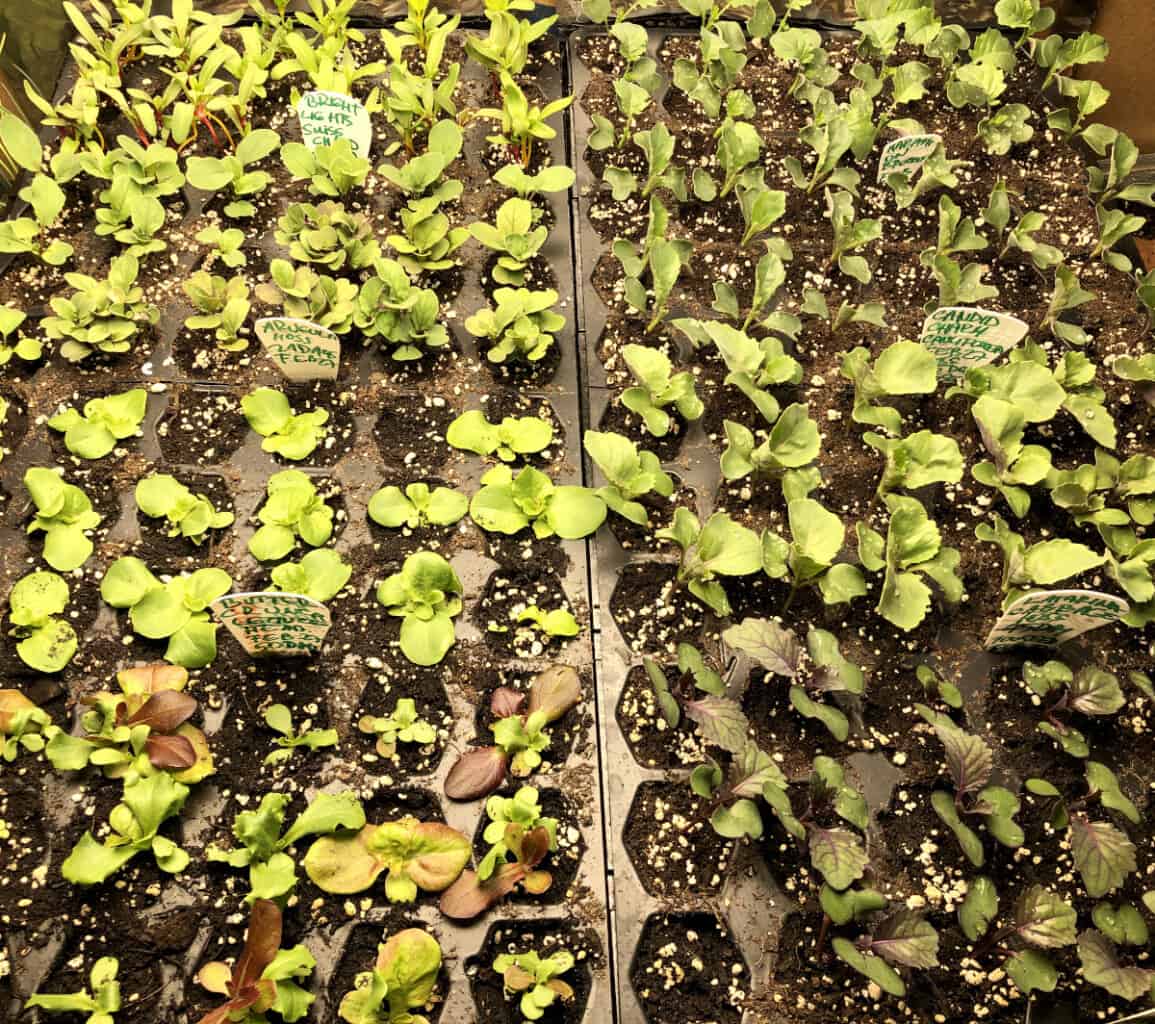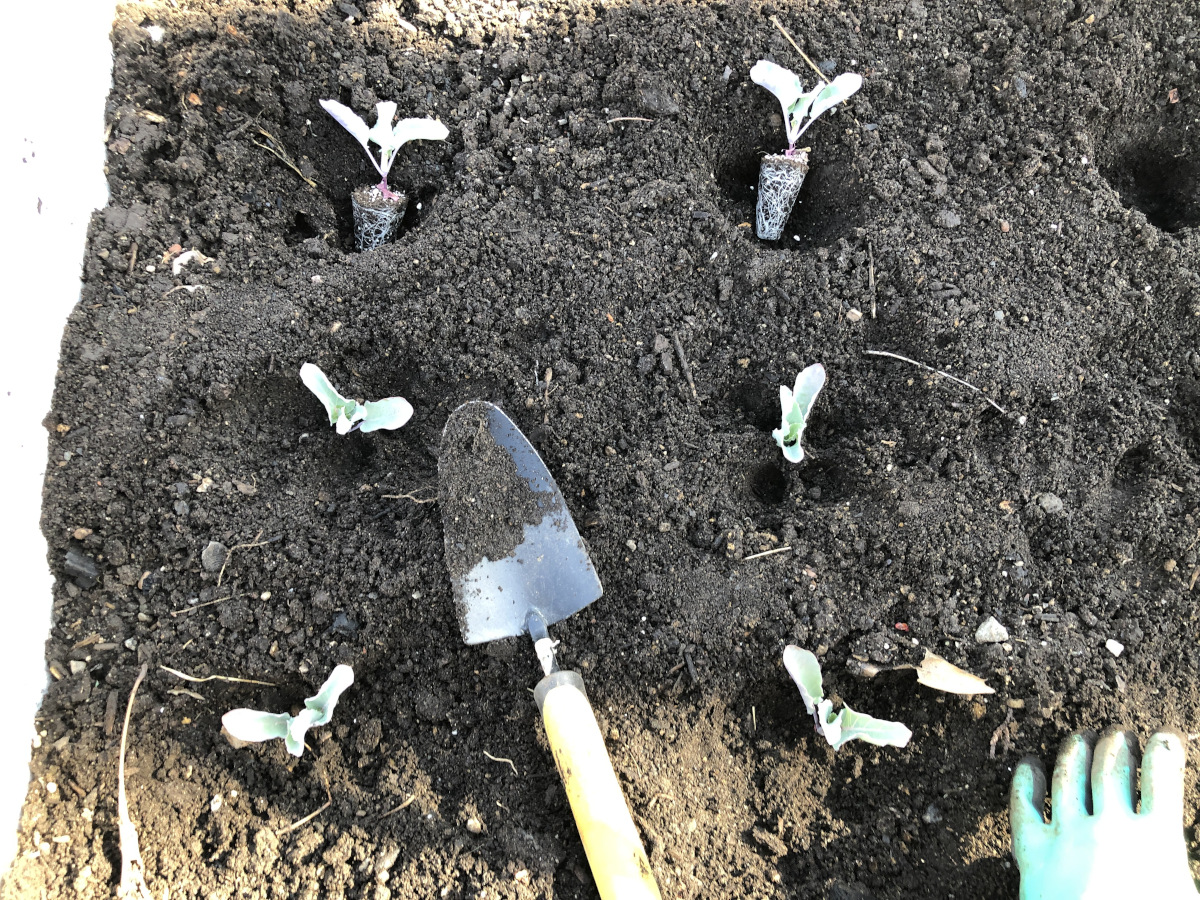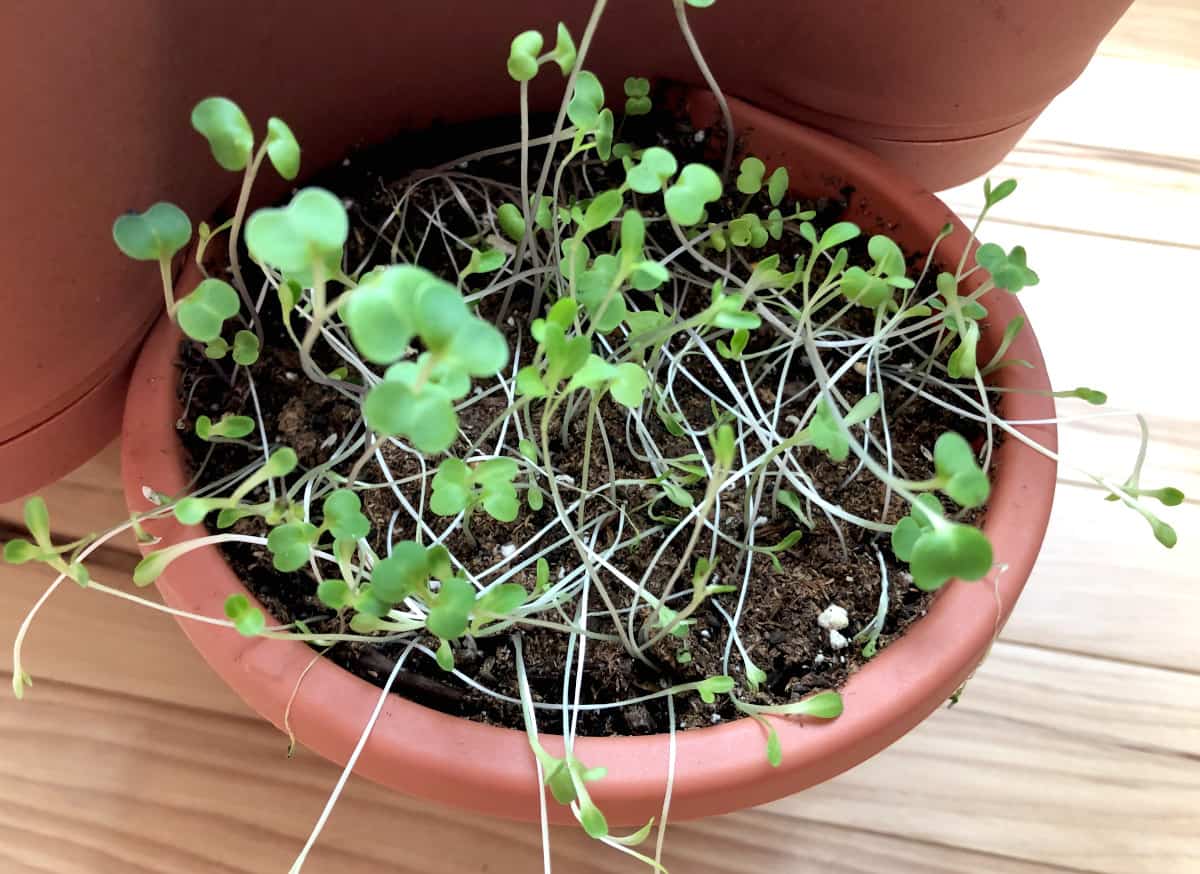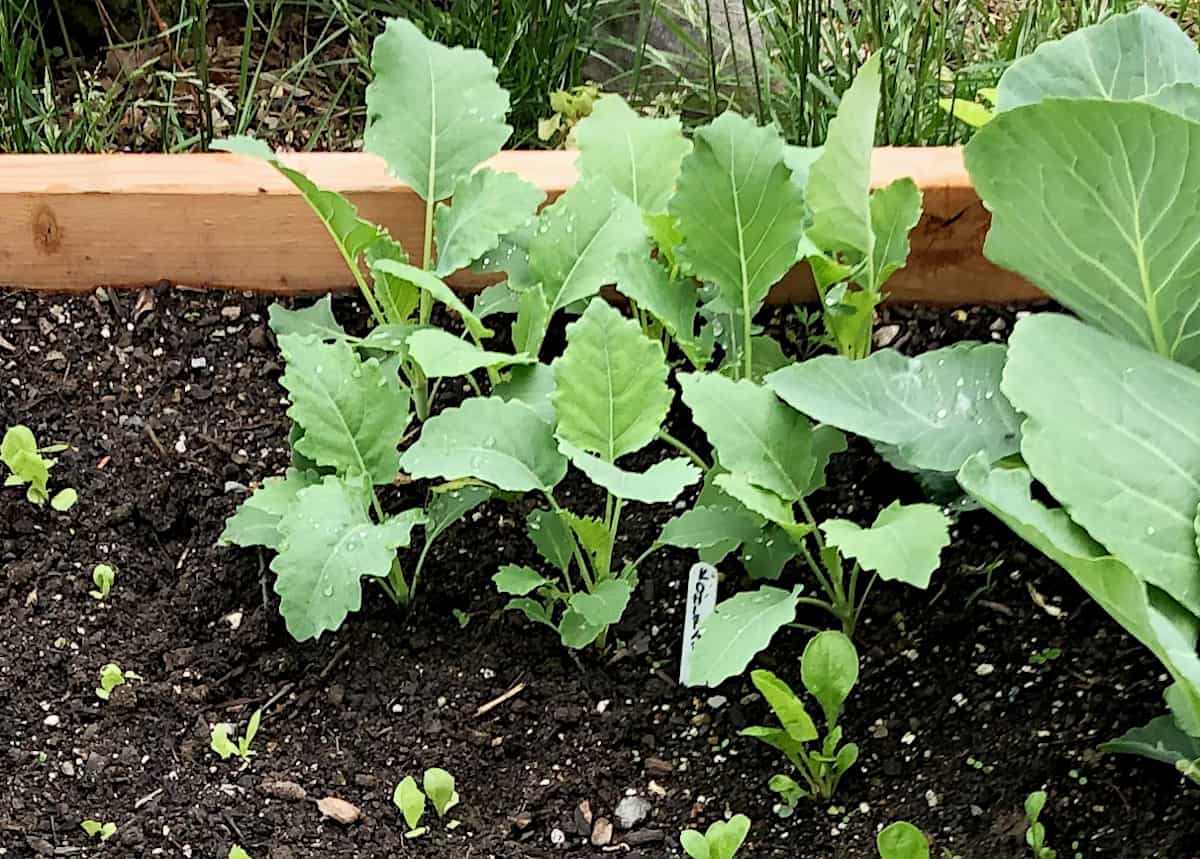I do not like to repot my seedlings. Instead, I plant them at the right time, about 6-8 weeks before it is their time to be planted outside. By starting seeds at the correct timing, one can avoid transplanting, or repotting into larger pots and instead transplant seedlings in their permanent spot when the time is right.
The best time to repot seedlings to larger pots is after about 6-8 weeks since the seeds have been sowed, and the seedlings have strong roots and a number of roots grow out of the bottom of the pot they are planted in. Once the seedlings outgrow their starter pots, they can be repotted into larger containers, or pots, or planted directly in the garden if the weather allows. It is also time to repot seedlings to larger pots or containers when multi-sowed and the seedlings become crowded as they grow and compete with each other for light, space, water, and nutrients.

My goal is to make gardening fun, and productive and avoid unnecessary workload. Repotting to me is an extra, unnecessary workload, I avoid it as much as possible. I see no reason to repot seedlings, I set a date I want them planted outdoors and sow them 6-8 weeks before the date I have set. Then I plant the seedlings in their permanent spot after I hardened them off. Should any frost come our way, I cover them with frost protection. Done, no repotting necessary.
A GOOD READ: What is plant hardening?, How to harden off seedlings
When not to repot seedlings into larger pots
Do not repot the seedlings into larger pots when the seedlings’ roots are still weak and shallow and do not peek out of the bottom hole of the pot. The roots of the seedlings are still developing and growing, by repotting the roots could get disturbed, and torn and the seedlings would need time to recover. Severe root damage could cause the seedlings to die after repotting when the roots were still weak and few in number.

On several occasions, I have seen beginner gardeners ask questions about whether they should repot their seedlings because they are getting tall. They forgot that even though the seedlings look tall above the ground, the roots under the surface are still weak, and shallow and the number of roots is still only developing. Always check the hole on the bottom of the pot before you start repotting the seedlings. It is better for the roots to grow strong in a small pot rather than being ripped off while they are still weak.
A GOOD READ: What are some common seedling problems?
If possible, avoid repotting and only repot if completely necessary before planting the seedlings in their permanent spot. After repotting, or transplanting the seedling might go through a period of stress and recovery from repotting. Less, or rather no stress put on the seedlings makes the stronger and quicker to fruit. The stronger the roots, the less stress the seedlings will go through. Stressing the seedlings can be totally avoided by planting them in their permanent spot once they have strong roots.
How long can seedlings stay in the seed-starting mix?
Usually, the seedlings stay in the seed starting mix for up to 6-8 weeks. After that, they are transplanted into a garden to their permanent spot, or larger containers or pots. If the seedlings stay in the seed starting mix longer than when they have two sets of true leaves, they need to be fertilized. Most seed-starting mixes do not have fertilizers in them to feed the seedlings with nutrients. If the seedlings stay in a seed starting mix longer than needed, the seedling will grow weak because they will lack nutrients, and will need to be fed. Use liquid fertilizer mixed with water following the manufacturer’s instructions when feeding seedlings.

I do not sow my seeds, nor grow my seedlings in seed-starting mixes. I much prefer quality soil mix with all the nutrients included the seedlings will need when it starts to grow. This year, I filled my seed trays with Coast of Maine grower’s mix. This mix has lots of organic matter and nutrients that will give the best start to my seedlings, as it includes compost, lobster, kelp, fish bone meals, worm castings and mycorrhizal, and natural slow-release nitrogen. So far, I had the best results using this mix. Coast of Maine grower’s mix comes in a 1.5 cubic feet bag. With this amount of soil mix, I am able to fill a lot of seed trays. And nothing goes to waste as the seedlings together with the soil it grows in will go down to their permanent hole with them. This is the best mix to start the seeds in I have ever found! Just look at those photos, how large and healthy my seedlings are! I use this mix to pot my indoor plants as well.
Should I repot leggy seedlings?
Repotting leggy seedlings will help only the tomato seedlings as the tomato plant sends out roots along the whole stem. Since other plants do not send roots along the whole stem, or send roots out only below their nod, repotting such leggy seedlings might kill the seedlings as the stem or nod below the soil might rot. If leggy seedlings, in general, start over and provide adequate light. The seedlings are leggy because they stretch for the light source. Leggy seedlings grew tall and weak because they lack adequate light. As you sow the seeds again, ensure the seedlings get at least 12 hours of strong bright light.

Should you break up the root ball when planting?
When planting, the roots can be broken up or loosen up at the bottom if they grew in a circle and the root ball forms on the bottom. This will allow the roots to spread up and grow deep into the surrounding soil. If the roots grow in a circle, formed a root ball, and are not broken up or loosened up, they will continue to grow in the circle and the plant will not grow healthy. The roots will not be able to reach out for nutrients, and moisture, and the plant will not be well anchored. The same goes for seedlings or young plants when transplanting.
A GOOD READ: When and how to plant a seedling
Should you water seedlings before transplanting?
Yes, water the seedlings a day before transplanting them, so the plant is well hydrated and the roots are well anchored in the soil. It will be easier to take the seedlings out of the seed trays or pots.
Should you remove old soil when repotting?
If the soil is old, broken down, and without any nutrients left, it can be removed from around the roots as the new soil with nutrients and good structure will provide all the plant needs. When repotting the young seedlings that have been rooted in the soil only for a few weeks, the soil around the roots does not need to be removed. The soil can be left with the roots anchored in it as the transplanted seedlings will grow larger roots that will spread and reach for water and nutrients. Always remove old diseased soil that carries diseases and harmful fungi or mold.
What not to do when repotting plants?
- Do not pull the weak plants out by the stem as the stem could break off the roots
- Do not transplant the plant into a smaller pot than the one it outgrew
- Do not transplant the plant into too large a pot
- Do not use pots or containers with no draining holes
- Do not replant outdoors during inappropriate weather like too wet, too cold, or too hot
- Use fresh soil
- Do not leave air pockets in the soil when transplanting
- Do not fertilize the plant right after transplanting
Why did my seedlings go into shock after repotting?
Seedlings might go into a shock after transplanting or repotting because there was damage to the root system and a change in the environment.
Do seedlings recover from transplant shock?
The seedlings usually recover from transplant shock if the damage to the roots was not too severe, but it might take some time for the seedlings to recover and grow. Keep the seedling well-watered and be patient for it to recover. The transplant shock might be shown in the appearance of the seedlings like yellowing, wilted leaves, or a weak, droopy stem.
How to care for seedlings in transplant shock?
Keep the shocked seedling well-watered and away from direct sun, preferably in a shady place or filtered sun for a couple of days.

How do you prevent seedling shock during transplanting?
- Transplant seedlings when they have a well-established root system.
- Ensure the roots are not in a root ball when transplanting. Gently loosen up the roots that grew into a root ball.
- Transplant the seedlings during a shady day.
- Keep them away from strong winds and scorching sun.
- Water the seedlings well right after transplanting to fill up air pockets.
- Keep the newly transplanted seedlings well hydrated.
- Provide little of the nutrients to the roots once the plant has settled
What is a seedling and how to grow it
Why are my tomato seedlings staying small, and stopped growing?

